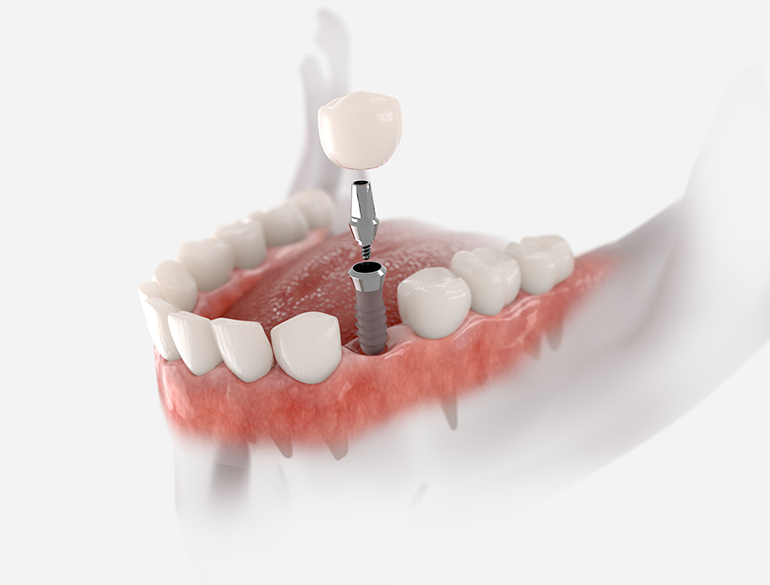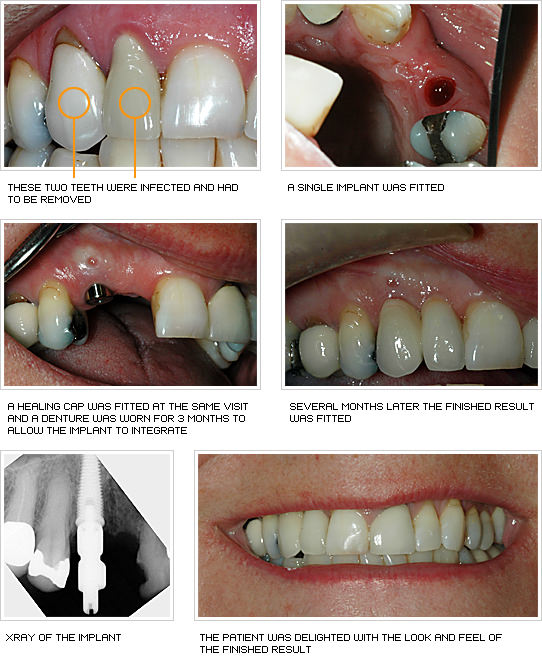Dental Sense Fundamentals Explained
Table of ContentsEverything about Dental SenseDental Sense Things To Know Before You Get This5 Simple Techniques For Dental SenseNot known Facts About Dental Sense
are medical gadgets surgically implanted right into the jaw to recover an individual's capability to chew or their appearance. They provide support for artificial (fake) teeth, such as crowns, bridges, or dentures. When a tooth is lost due to injury or illness, an individual can experience complications such as fast bone loss, defective speech, or adjustments to chewing patterns that lead to discomfort.Dental implant systems are composed of a dental implant body and oral implant joint and may likewise include a joint fixation screw. Same day dental implants. The dental implant body is surgically placed in the jawbone instead of the tooth's origin. The dental implant joint is normally connected to the dental implant body by the joint addiction screw and extends with gums into the mouth to support the connected synthetic teeth
(https://dentalsense1.wordpress.com/2025/01/11/dental-implants-root-canal-procedures-professional-teeth-whitening/)Structure of The Oral Implant System picking oral implants, speak to your dental service provider about the potential advantages and dangers, and whether you are a candidate for the treatment. Things to think about: Your overall health is a vital element in establishing whether you are an excellent candidate for dental implants, how long it will certainly require to heal, and for how long the dental implant may remain in location.
Cigarette smoking may influence the recovery process and reduce the lasting success of the dental implant. The recovery process for the dental implant body might take several months or longer, throughout which time you normally have a temporary joint in location of the tooth. the dental implant procedure: Thoroughly comply with the oral hygiene instructions given to you by your dental supplier.
Getting My Dental Sense To Work
Implant failing can lead to the demand for an additional surgery to deal with or change the dental implant system. Recovers the ability to chew Recovers cosmetic look Assists keep the jawbone from reducing because of bone loss Maintains the wellness of the surrounding bone and gum tissues Helps keep adjacent (close-by) teeth secure Improves quality of life Damages to surrounding all-natural teeth throughout dental implant placement Injury to the surrounding tissues throughout surgical treatment, such as sinus opening Injury throughout surgical treatment (for instance, fracture of surrounding jawbone) Poor feature, such as seeming like the teeth do not attack with each other usually A feeling that the tooth is loosened or twisting in place resulting from a joint screw loosening up Implant body failing (looseness of the implant body) due to systemic infection, which may be more probable in clients with uncontrolled diabetes as a result of local infection in bone and periodontals sustaining the dental implant body as a result of delayed healing, which might be most likely in individuals that smoke Trouble cleaning up the gum tissues around the dental implant, causing bad oral health Without treatment gum condition Post-surgical pins and needles due to nerve impingement or damage Constantly notify healthcare providers and imaging technicians that you have dental implants prior Read Full Article to any magnetic vibration imaging (MRI) or x-ray treatments.
FDA is not knowledgeable about any kind of damaging occasions reported for MRI or x-ray treatments with dental implants. Oral implants systems are generally made from materials that adhere to global agreement requirements of the International Organization for Standardization (ISO) or ASTM International. These requirements have information of what makes a secure product.

An oral implant is a structure that changes a missing out on tooth. With screw-like devices, the cosmetic surgeon inserts an implant right into the jawbone, and it acts as a support for a man-made tooth, called a crown. A tool called an abutment connects the man-made tooth to the oral implant. The crown is tailor-made to fit the person's mouth and match the shade of their teeth.
How Dental Sense can Save You Time, Stress, and Money.
Some individuals are not qualified for oral implant surgery. It is for dental surgeons to operate people with: acute illnessuncontrollable metabolic diseasebone or soft cells condition or infectionIf these issues are resolved, a person can have the surgery. In, dental specialists avoid operating people with: If people with any of the above undergo oral implant surgical treatment, there is a greater danger of the implant stopping working.

Dental implant surgical treatment is an individualized procedure. It's not the very same for everyone. The adhering to offers a general summary of what you can expect your dental expert, dental specialist, periodontist or prosthodontist to do: Position the implant operatively. Provide you time to recover. Connect the post and final crown, bridge or denture.
Next off, your cosmetic surgeon will carefully position the oral implant into your jaw. Ultimately, your doctor will certainly reposition your gums and shut the laceration with stitches. If your implant is near the front of your mouth, your dental professional will make a momentary tooth for you to use up until you recover. In this way, you will not have a space in your smile while you recuperate.
Top Guidelines Of Dental Sense
Throughout the healing stage, your jawbone should fuse to the oral implant. This process can take anywhere from three to 9 months.
As soon as your implant heals, your dental expert can attach the abutment (small connector article) and your last repair (crown, bridge or denture). This typically takes about one hour to finish and might require a 2nd small surgical procedure. You should not feel any type of discomfort throughout your oral implant treatment since your copyright will use medication to numb your gum tissues.